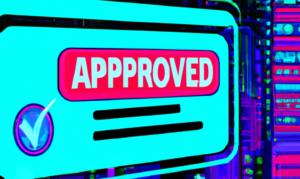Unlike other types of loans, a Home Equity Loan (HELOAN) and Home Equity Line of Credit (HELOC) let you borrow against the value (equity) of your home. These types of loans offer homeowners the ability to borrow a large sum for home improvement tasks, unexpected repairs, or other expenses typically centered on improving your quality of life. Compared to personal loans, and debt settlement options, HELOANs and HELOCs tend to have lower interest rates and longer payment terms.
These loans do not always come without certain risks, so it is important to understand the issues that may arise before you choose to take out a Home Equity Loan or Home Equity Line of Credit.
Defining Home Equity Loans and Lines of Credit
A Home Equity Line of Credit or Home Equity Loan allows you to borrow from the equity you have built in your home without having to take out a new first mortgage if your home is paid off, or to refinance your existing mortgage to then cash out from your equity. There are two basic types of home equity loans. Each may be useful for different homeowners with different financial needs.
1. Home Equity Loan (HELOAN)
This is a fixed-rate home equity loan offering you a lump sum of money to use as you please. The loan has an interest rate and repayment term that remains the same throughout the life of the loan. You will have to make monthly payments based on the entire allotted money that is presented to you up front.
2. Home Equity Line of Credit (HELOC)
This is an adjustable-rate mortgage associated with a credit line attached to the equity of your home (somewhat similar to having a credit card attached to the equity of your home). You can get a pre-approved spending limit and can withdraw money as needed from the line of credit.
The interest rate may fluctuate based on market rates, and the monthly payments will vary depending on how much is borrowed at any given time (take out more from your credit line, your payment goes up accordingly). This type of loan also has a term limit (typically 15 years) and the loan must be repaid at the end of this term.
Credit Requirements
Before the recession in 2008, it was relatively easy to qualify for a home equity loan or any mortgage loan for that matter. Underwriting standards were lax, to say the least. However, these lending options have become increasingly harder to obtain in the years since due to more stringent underwriting requirements and standards with regards to risk assessment and repayment ability of borrowers.
Of all the requirements, the most critical for equity loan types is that you have enough equity in the home (the difference between all outstanding mortgage loans for the property, and the market value of the property). Beyond that, credit requirements and repayment ability vary from lender to lender. A small number of lenders may accept a minimum of a 620-credit score while other lenders may require 680 or higher.
Document Requirements
Getting home equity loans are similar to getting a first lien mortgage. You will need to provide the same type of credit, financial, asset, and other documentation for risk assessment and repayment ability:
- Payroll Statements
- Tax Returns
- Bank Statements
- Identification
Depending on whether you apply for a home equity loan with your existing bank or a bank you do not currently do business with, you may or may not have to submit all of the documentation listed below:
- Credit Report
- Income Verification
- Monthly Expenses
- Personal and Business Assets
How Do Home Equity Loans Work?
Once you qualify for the home equity loan, you are either issued a check or bank draft. You will have access to the money to pay your bills, pursue renovations or otherwise utilize the equity cash as needed. You will have a repayment term set and each payment will reduce your loan balance and cover some of your interest costs accordingly.
An Example of a Home Equity Loan:
- You need $25,000 to complete repairs to your kitchen.
- Your home value is $300,000 and you owe $150,000 on your first mortgage.
- You have $150,000 of equity to borrow the $25,000 you need.
- You apply and are approved for a 25-year home equity loan at a 7.5% interest rate.
- Your monthly payment would be $185 per month for the life of the loan.
- This payment will be in addition to your existing first mortgage payment.
How Can Home Equity Loans Be Used?
The most popular uses for a home equity loan or line of credit are:
- Home Repairs
- Renovations or Improvements
- Paying off Taxes
- Purchasing Investment Property
- Consolidating Debts
Disadvantages to Home Equity Loans
The main disadvantage of taking out a home equity loan or line of credit is how easy it is to find yourself in a tough financial situation by borrowing and drawing from the credit line more than you really need.
Sometimes these loans can have a high interest rate (depending on the lender and the lenders repayment risk assessment of the borrower), making them a poor choice for debt consolidation or home upgrades if the high interest rate outweighs your return on investment. Additionally, if you just need to borrow a small amount, it may be difficult to find a lender willing to work with you due to lenders having minimum loan requirements for home equity loans or lines of credit.
Be Sure it Makes Financial Sense
Home equity loans and lines of credit are a useful tool for the educated borrower who understands their options, the benefits, and the associated risks. Many homeowners choose to get these separate home equity loans because they already have a low rate first mortgage they have been paying on for many years, so it makes financial sense to leave their first mortgage loan alone, then borrower the remainder through a separate equity loan.






